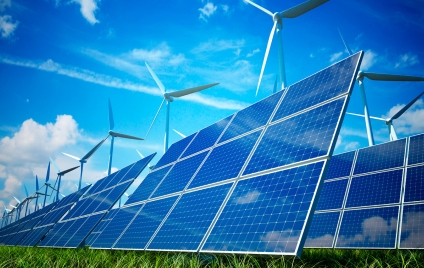The future of cleantech is changing in India. Macro developments such as urbanisation, rapid growth, climate change, and depletion of resources continues to drive the need for investments in clean technologies. At the same time, promising industries are suddenly diminishing and new clean industries are coming onboard to drive the future growth for clean technologies.
India represents a key market for clean technology companies as it is investing billions in this sector. The objective of the Indian Government is to foster a second Green Revolution. The Indian environment market is estimated to be growing at 9 per cent per annum. The US and Western European countries are the leading source of imports of environmental technologies into India. Foreign Direct Investment (FDI) in environment equipment and services is allowed under the automatic route with up to 100 per cent foreign equity holding. Thus, the Indian market offers strong business prospects for foreign investors. India’s growing economy and surging demand for clean power to strengthen energy security and reduce pollution, as well as ongoing sector reforms, is making India one of the most attractive destinations in the world for environmentally-friendly investments, as per an ADB report.
Emerging trends and growth drivers
Governmental Regulations:
Depletion of Natural Resources:
Adopting Newer & Cleaner Technologies:
Man-Environment Conflict:
Strong Economic Growth:
Global Climate Negotiations:
Overview and Administration Setup
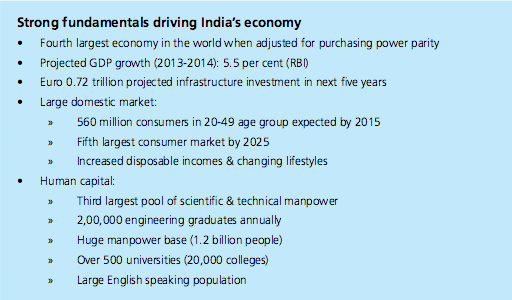
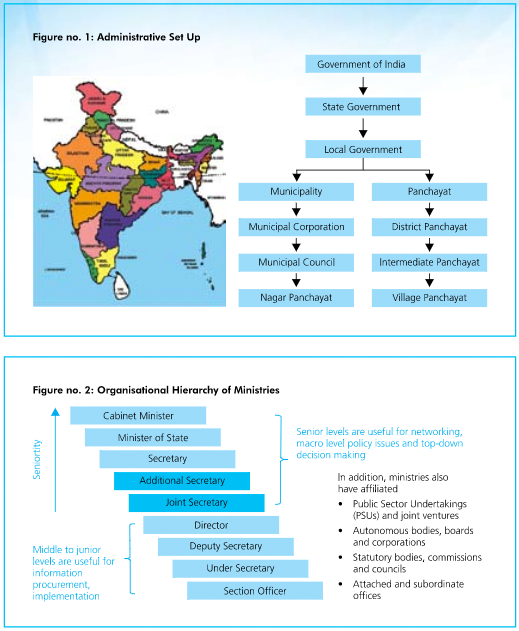
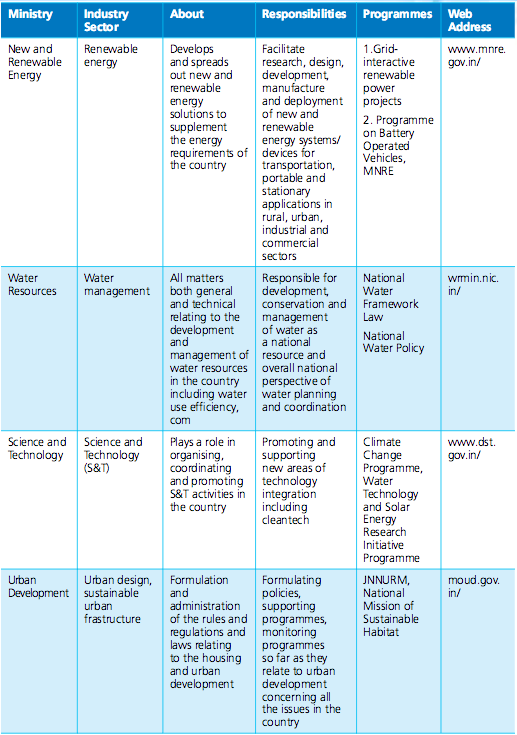
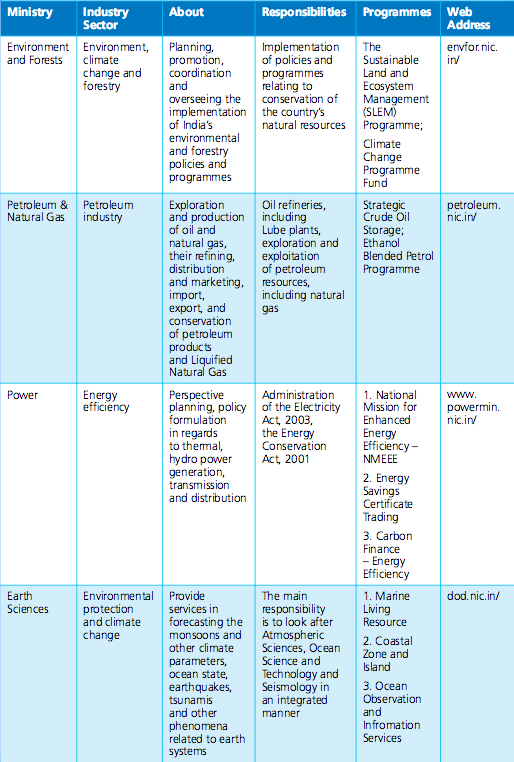
Financing framework for Cleantech in India
Cleantech is an emerging area in India and as such the focus has been sector-specific. For e.g., there are separate programmes and schemes targeted at individual sectors such as solar, wind, energy efficiency, etc. Each of the sectors are under the overall administrative jurisdiction of separate ministries at the central government level and their corresponding departments at the state government level. As a result there is no single unified financing mechanism for cleantech. The financing available under such schemes and programmes varies from support for technology development to capital subsidy for commercialising and roll-out of projects. The funding options available in each sector have been addressing the respective sections. This section will present a broad overview of the range of institutions involved across various stages of the value chain.
Developing and commercialising clean technologies in India can be divided into two phases for the purposes of discussing the financing options. The first phase covers technology innovation, R&D, concept demonstration, pre-commercialisation and commercialisation. For this first phase, grants and subsidies can be applied for from various sources. As the company approaches actual commercialisation, loans are usually required. In the second phase, the roll-out or the post commercialisation stage when goods or services are produced, equity investments, loans and insurances are often required. This type of financing is usually provided by commercial and international financial institutions. Other potential funding sources for this stage include venture capital and private equity.
Source: Cleantech Handbook India, https://www.tem.fi/files/38574/Cleantech_Handbook_13_Jan_2014.pdf



